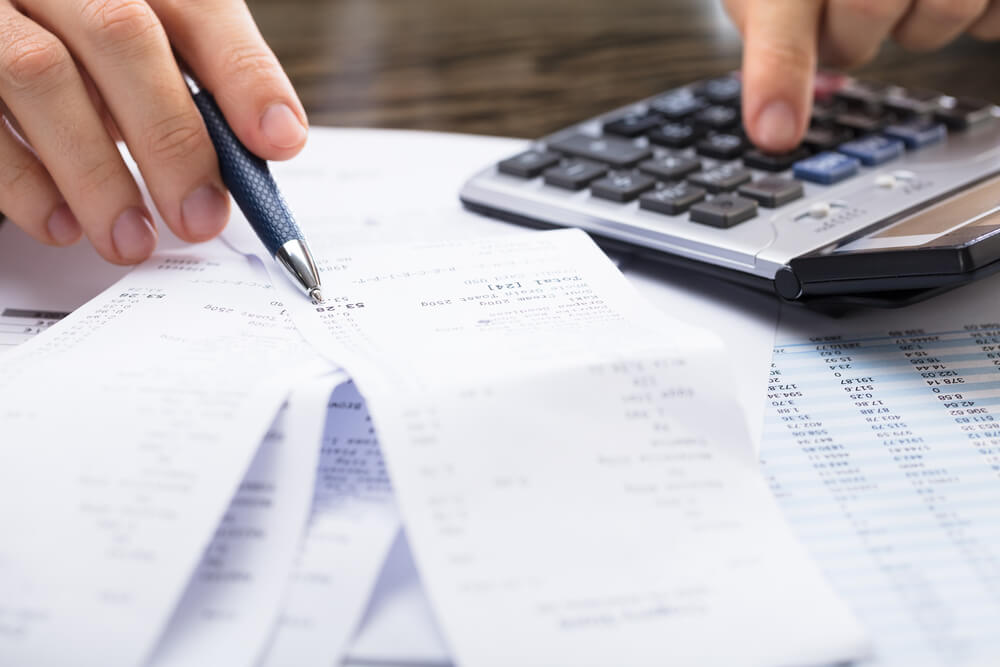Financial terminology can be intimidating for many, let alone new business owners. However, Value Added Tax (VAT) is certainly a term you should get to grips with. In fact, understanding how VAT works in the UK is crucial for entrepreneurs, traders and individuals to ensure compliance with tax legislation and can help you to make informed financial decisions. This overview explores the fundamental principles and key aspects of the UK’s VAT system.
What is VAT?
VAT is a consumption tax levied on the value added at each stage of production or distribution of goods and services. It is an indirect tax collected by businesses on behalf of the government and passed on to the final consumer.
Simply put, consumers are expected to pay a tax on the products and services they buy based on the value of the purchase. VAT rates are percentage based, which means the greater the price, the more the consumer can expect to pay.
As a result, VAT is a significant revenue source for the government and is commonly used in over 250 countries worldwide.
How does VAT work?
VAT applies to nearly all goods and services. VAT-registered businesses can be seen as unpaid tax collectors, charging VAT on what they sell to the consumer and paying it over to HMRC.
To make this easier for companies, they must submit a VAT return indicating the total they’ve collected and the total they’ve paid out within the tax quarter or year.
The distinction between VAT paid and VAT collected lies in input tax and output tax. Input tax refers to the VAT paid by you to suppliers for equipment, materials and expenses. This also encompasses professional services like consultancy fees or accountancy services.
On the other hand, output tax refers to the VAT charged to customers on the products or services sold. By accounting for input and output tax, businesses can accurately calculate their net VAT liability during the VAT return process.
What are the different current VAT rates?
There are a number of VAT rates used in the UK.
Standard rate
The standard rate tax refers to the regular rate of VAT applied on most goods and services. The current standard rate is currently 20% in the UK.
Reduced rate
Reduced rate VAT applies to specific goods and services that the legislation deems benefiting from reduced taxation for various reasons, such as promoting certain industries or supporting vulnerable groups. The current reduced rate is 5% in the UK.
Zero rate
Zero rate VAT refers to a tax rate of 0% applied to specific goods and services, meaning that VAT is charged, albeit at 0% with the end effect being the consumer does not see any additional VAT element charged on their purchase. Zero rate is applied to basic food items, books, public transport and is also used when exporting goods out of the UK.
Zero rate is not the same as exempt or “no VAT” or “outside the scope of VAT”, those three things have very different meanings in VAT legislation. Zero rate is often referred to as “no VAT” but that is not correct use of language. VAT is charged, at 0%.
The reason for precision here is that zero rate allows the business making the sale to reclaim their input tax on purchases, whereas an “exempt” sale would restrict input tax recovery and likewise for “No VAT”, so be clear whether what you supply is exempt or zero rated.
Businesses still need to track zero-rated transactions, which count towards VAT registration.
What goods and services are exempt from VAT?
Not all products or services incur VAT. If certain goods are exempt from VAT, it could indicate that the government doesn’t want to tax something that might form the very fabric of society. Some examples of VAT-exempt items include:
- Education and training
- Financial services like insurance and banking
- healthcare and medical services
- Fundraising events by charities
- Certain types of cultural and sporting events
- Necessities like certain food items, water, domestic gas and electricity
If your company only sells VAT-exempt products or services, your business cannot register for VAT nor reclaim input tax on purchases.
When does your business need to start charging VAT?
In the UK, your business must start charging VAT when its taxable turnover exceeds the VAT registration threshold of £85,000. Once your business surpasses this threshold in any consecutive 12-month period, you must register for VAT with HMRC and begin charging VAT on your taxable supplies of goods and services.
Regardless of VAT taxable turnover, you must also register if the business is based outside the UK and holds stock in the UK.
It is essential to keep track of your turnover regularly to ensure timely compliance with VAT regulations.
Is it in my interest to register my business for VAT voluntarily?
Voluntary VAT registration is available to any business that sells taxable supplies and whose turnover is below the compulsory VAT registration threshold. This enables small businesses to enjoy the same benefits as their larger competitors.
Some of the additional benefits of voluntary VAT registration are:
- Reclaiming VAT: You can recover VAT paid on business-related purchases, reducing overall costs
- Perceived professionalism: Being VAT-registered can enhance your business’s image and credibility, especially when dealing with larger companies
- Attracting customers: Some businesses prefer to deal with VAT-registered suppliers, which could expand your customer base
- Gain valuable insight: You can get useful details about your business activities and performance from your VAT records and returns
- However, there are also potential drawbacks:
- Administrative burden: VAT compliance requires proper record-keeping, VAT returns and additional paperwork
- Cash flow impact: Charging VAT could affect your pricing and cash flow, particularly if your customers cannot reclaim the VAT
- Pricing competitiveness: If your competitors are not VAT-registered, your prices might appear higher due to the VAT component
Before making a decision, carefully assess your turnover, customer base, industry norms and the potential impact on your finances and operations.
How does your business charge VAT?
As a UK business, you charge VAT on your taxable supplies of goods and services by adding the appropriate VAT rate to your selling prices.
When you issue an invoice to your customers, it should clearly state the VAT amount charged separately. For example, if the applicable VAT rate is 20%, and your product is priced at £100, you would add £20 as VAT, making the total invoice amount £120.
It’s crucial to ensure that your VAT charges are accurate, and you must maintain proper records of all transactions for VAT compliance and file VAT returns to HMRC at the required intervals.
How to register your business for VAT?
To register your UK business for VAT, first, check if your taxable turnover exceeds the current VAT registration threshold of £85,000.
If your business is eligible, you will need to gather essential business details like company name, address, business sector and estimated turnover.
Next, create a Government Gateway account on the HMRC website if you don’t have one. Complete the online VAT registration form, making sure you have written down accurate information.
After submitting the application, HMRC will review it, and if approved, you will receive a VAT registration certificate within a few weeks.
Once registered, you must start charging VAT on taxable supplies and comply with HMRC’s VAT rules, including timely VAT returns and payments.
What are the VAT invoice requirements?
VAT invoices are essential documents that must be submitted by VAT-registered businesses. In the UK, VAT invoice requirements include the following:
- Your business and customer’s name and address
- Invoice issue date
- Your identification number (invoice number)
- A clear description of the goods or services provided
- The quantity of each item supplied and its unit price
- Any discounts
- The total amount payable
- Currency paid in
- VAT registration number
- Net price of each product or service
- VAT rate
- The total amount of VAT being charged
- Subtotal of the sale excluding VAT
VAT invoices must be issued within specific timeframes, depending on the type of transaction. It is essential to retain copies of VAT invoices for at least six years for compliance purposes.
How to submit a VAT return?
In the UK, you will usually need to send a VAT return to HMRC every 3 months, known as the ‘accounting period’. If you are a registered VAT business, you need to submit a return even if you have no VAT to pay or reclaim. To do this:
- Log in to your Government Gateway account on the HMRC website
- Navigate to the ‘VAT section’ and select ‘Submit a Return’
- Enter the required information for the VAT period
- Confirm and submit the VAT return electronically to HMRC
- Pay any VAT liability or claim any VAT refund, depending on the outcome of the return
- Retain copies of the submitted VAT return and relevant records for at least six years for compliance purposes
How to claim back VAT
To claim back VAT, your business must be VAT-registered and have kept
accurate records and valid invoices for all business expenses. Make sure to include these expenses as input tax on your regular VAT return.
Next, offset the input tax against the VAT you’ve collected on your sales (output tax). If the input tax exceeds the output tax, you are eligible for a VAT refund. Submit your VAT return to HMRC online – either through your Government Gateway account or using compatible accounting software.
HMRC will process your claim and issue the VAT refund accordingly within a few weeks.
Get in touch
Registering, claiming and paying VAT does not have to be a complicated task. Rayner Essex’s Cloud Accounting Solutions team work with several compatible software solutions for Making Tax Digital (MTD) for VAT – a government regime designed to make it easier for individuals and businesses to get their tax right and keep on top of their accounts.
Get in touch today to find out more about our VAT accounting services and how we can help you streamline your VAT returns.


Sign up to our newsletter
Join our mailing list to receive regular updates on
the news and events you need to know about.

